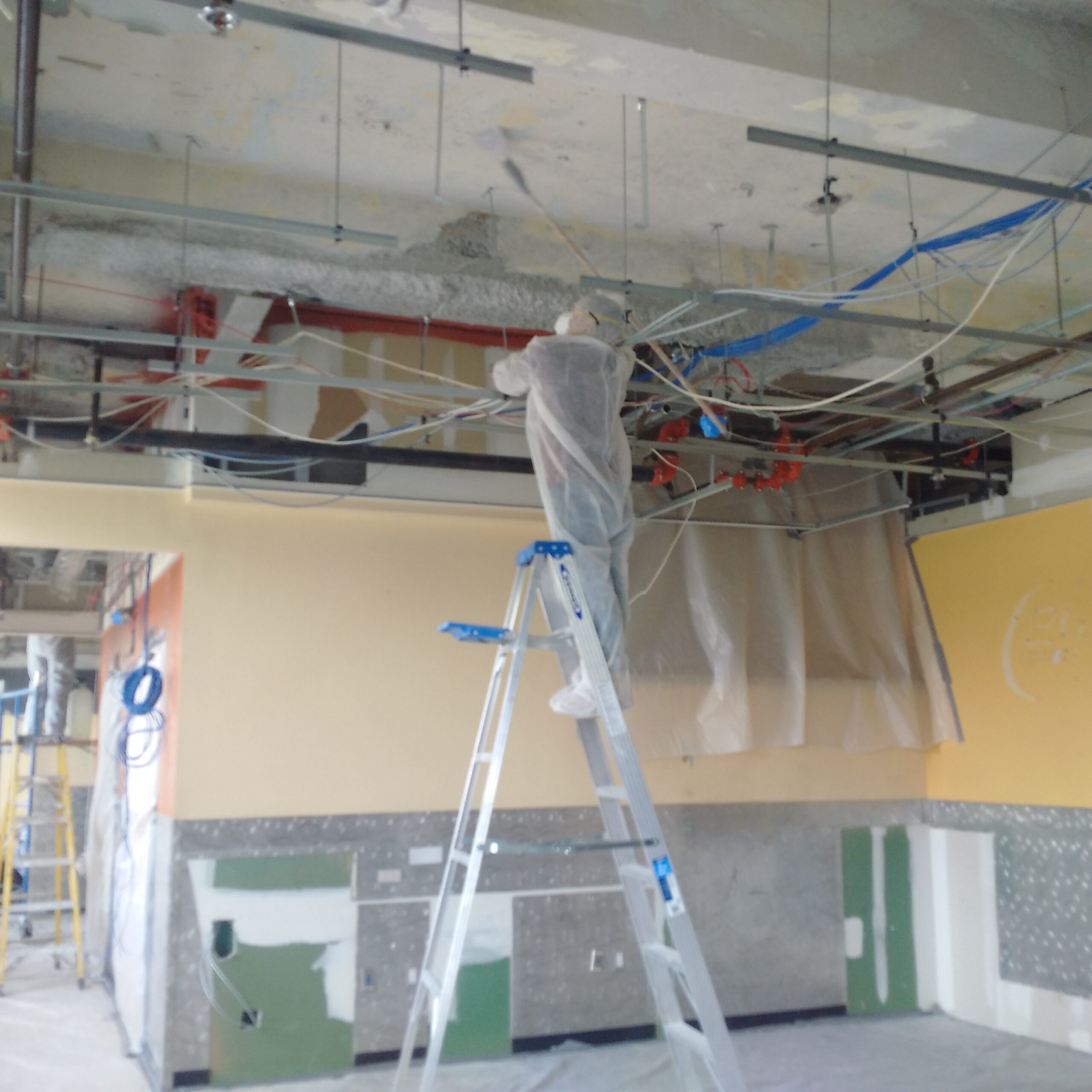Trusted Lead Paint Removal Company-- NYC's Premier Lead Reduction Service
Trusted Lead Paint Removal Company-- NYC's Premier Lead Reduction Service
Blog Article
Comprehensive Overview on Effective Lead Offense Elimination Techniques
In the realm of ecological safety and security, dealing with lead infractions requires a thorough and organized approach. This comprehensive guide begins by highlighting the vital preliminary actions of recognizing lead threats via advanced assessment and testing methods. Techniques such as XRF analysis and dust clean tasting are indispensable in pinpointing contamination sources. Furthermore, the guide elaborates on the importance of sticking to rigorous safety and security methods during the removal process, including making use of proper PPE and separating influenced locations (Lead Paint Removal Company). The subsequent sections assure to go over post-removal verification and preventive strategies, making certain lasting security and compliance. Discover the detailed details that make these techniques not simply efficient but essential.
Recognizing Lead Dangers
Determining lead threats is a critical first action in reducing the threats associated with lead direct exposure. Lead, a toxic steel, can be existing in various ecological tools, including paint, soil, water, and dirt. It poses serious wellness risks, especially to youngsters and pregnant ladies, bring about neurological damage and developmental hold-ups. Consequently, accurate identification of possible lead resources is important for efficient removal.
The initial phase in identifying lead hazards involves understanding common lead sources within the built atmosphere. Structures built before 1978 are particularly vulnerable due to the prevalent use lead-based paint during that period. In addition, dirt contamination can take place from wearing away outside paint, commercial discharges, or historical use leaded gasoline.
Another substantial resource is lead piping and pipes fixtures, which can leach lead into alcohol consumption water. Durable goods such as toys, ceramics, and imported items might likewise include hazardous lead levels. Especially, job-related settings and pastimes involving lead can track contaminants right into homes.
Evaluation and Testing
When resolving lead dangers, effective analysis and testing are vital. Initial evaluation generally entails a visual examination to determine possible lead sources, such as degrading paint or infected dust.

Dust clean tasting is another vital strategy, specifically in domestic settings. By gathering examples from floorings, windowsills, and other surfaces, this method supplies insights into prospective direct exposure threats. Furthermore, soil testing around building boundaries is crucial to spot lead contamination that could position dangers, specifically to youngsters.
Safe Removal Procedures
Upon completing extensive evaluation and testing, executing safe removal treatments is the following important stage in attending to lead dangers. This process guarantees that lead-contaminated materials are properly and securely removed, lessening danger to both workers and residents. The very first step includes isolating the damaged location using plastic sheeting and correct securing techniques to avoid the spread of lead dirt.
Employees should don ideal individual protective tools (PPE), consisting of respirators, gloves, and non reusable coveralls, Website to alleviate exposure. Using specialized tools and wet approaches, such as wet fining sand or utilizing HEPA-filtered vacuums, lowers the dispersion of lead fragments. It is crucial to stay clear of dry fining sand or rough blowing up, as these techniques can produce harmful lead dust.
Garbage disposal is another crucial component; all infected materials have to be safely bagged and identified according to EPA and local guidelines. Additionally, detailed cleaning of the workplace with HEPA vacuum cleaners and wet wiping ensures the removal of recurring lead particles.
Post-Removal Confirmation

Verification of successful lead removal, referred to as post-removal verification, is necessary to ensure the security and habitability of the remediated location. This process involves a collection of thorough assessments and tests created to detect any residual lead fragments that might pose health and wellness dangers. The first action generally site includes an aesthetic assessment to analyze the completion and quality of the remediation work. This assessment makes certain that all well-known sources of lead have been attended to which no noticeable indicators of contamination continue to be.
Complying with the visual evaluation, environmental sampling is conducted. This entails accumulating dirt, dirt, and in some cases water samples from the remediated area. Accredited laboratories assess these examples to determine lead levels, ensuring they drop listed below the security thresholds developed by governing bodies such as the Epa (EPA)
In addition, air quality screening might be carried out to spot airborne lead fragments, particularly in cases where extensive lead-based paint elimination or restoration has taken place. The my response outcomes of these tests give measurable data validating that the lead levels are within permissible restrictions.
Eventually, post-removal verification works as a vital checkpoint, validating the performance of the lead abatement initiatives and securing the health of owners and visitors.
Safety Nets and Maintenance

An essential preventive procedure includes the usage of lead-safe licensed specialists for any restoration, repair, or painting tasks. These professionals are educated in techniques that reduce lead dirt and debris. Furthermore, keeping painted surface areas to stay clear of chipping or peeling off is essential, as weakening paint can launch lead fragments into the atmosphere.
Educational campaigns targeting homeowner and renters relating to the threats of lead and the importance of reporting any type of prospective threats can further improve precautionary initiatives. Regular cleansing using HEPA vacuums and damp wiping strategies can considerably minimize lead dirt buildup.
Verdict
In recap, effective lead violation removal requires a precise technique incorporating detailed assessment, precise testing, and stringent removal procedures. Ensuring safety through proper isolation and personal safety tools continues to be extremely important. Post-removal confirmation using ecological tasting and air high quality testing validates compliance with recognized safety standards. Continuous evaluations and upkeep are crucial to alleviate future lead risks, thereby guarding public wellness and guaranteeing continual conformity with regulatory needs.
Report this page